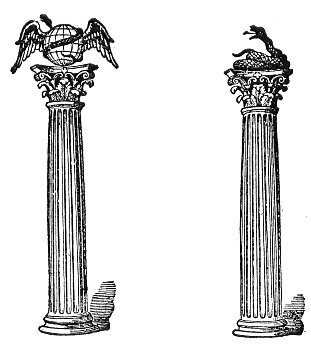Astrology was practised among all the ancient nations. In Egypt, the book of Astrology was borne reverentially in the religious processions; in which the few sacred animals were also carried, as emblems of the equinoxes and solstices. The same science flourished among the Chaldæans, and over the whole of Asia and Africa. When Alexander invaded India, the astrologers of the Oxydraces came to him to disclose the secrets of their science of Heaven and the Stars. The Brahmins whom Apollonius consulted, taught him the secrets of Astronomy, with the ceremonies and prayers whereby to appease the gods and learn the future from the stars. In China, astrology taught the mode of governing the State and families. In Arabia it was deemed the mother of the sciences; and old libraries are full of Arabic books on this pretended science. It flourished at Rome. Constantine had his horoscope drawn by the astrologer Valens. It was a science in the middle ages, and even to this day is neither forgotten nor unpractised. Catherine de Medici was fond of it. Louis XIV. consulted his horoscope, and the learned Casini commenced his career as an astrologer.
The ancient Sabæans established feasts in honor of each planet, on the day, for each, when it entered its place of exaltation, or reached the particular degree in the particular sign of the zodiac in which astrology had fixed the place of its exaltation; that is, the place in the Heavens where its influence was supposed to be greatest, and where it acted on Nature with the greatest energy. The place of exaltation of the Sun was in Aries, because, reaching that point, he awakens all Nature, and warms into life all the germs of vegetation; and therefore his most solemn feast among all nations, for many years before our Era, was fixed at the time of his entrance into that sign. In Egypt, it was called the Feast of Fire and Light. It was the Passover, when the Paschal Lamb was slain and eaten, among the Jews, and Neurouz among the Persians. The Romans preferred the place of domicile to that of exaltation; and celebrated the feasts of the planets under the signs that were their houses. The Chaldæans, whom, and not the Egyptians, the Sabæans followed in this, preferred the places of exaltation.
p. 464
Saturn, from the length of time required for his apparent revolution, was considered the most remote, and the Moon the nearest planet. After the Moon came Mercury and Venus, then the Sun, and then Mars, Jupiter, and Saturn.
So the risings and settings of the Fixed Stars, and their conjunctions with the Sun, and their first appearance as they emerged from his rays, fixed the epochs for the feasts instituted in their honor; and the Sacred Calendars of the ancients were regulated accordingly.
In the Roman games of the circus, celebrated in honor of the Sun and of entire Nature, the Sun, Moon, Planets, Zodiac, Elements, and the most apparent parts and potent agents of Nature were personified and represented, and the courses of the Sun in the Heavens were imitated in the Hippodrome; his chariot being drawn by four horses of different colors, representing the four elements and seasons. The courses were from East to West, like the circuits round the Lodge, and seven in number, to correspond with the number of planets. The movements of the Seven Stars that revolve around the pole were also represented, as were those of Capella, which by its heliacal rising at the moment when the Sun reached the Pleiades, in Taurus, announced the commencement of the annual revolution of the Sun.
The intersection of the Zodiac by the colures at the Equinoctial and Solstitial points, fixed four periods, each of which has, by one or more nations, and in some cases by the same nation at different periods, been taken for the commencement of the year. Some adopted the Vernal Equinox, because then day began to prevail over night, and light gained a victory over darkness. Sometimes the Summer Solstice was preferred; because then day attained its maximum of duration, and the acme of its glory and perfection. In Egypt, another reason was, that then the Nile began to over-flow, at the heliacal rising of Sirius. Some preferred the Autumnal Equinox, because then the harvests were gathered, and the hopes of a new crop were deposited in the bosom of the earth. And some preferred the Winter Solstice, because then, the shortest day having arrived, their length commenced to increase, and Light began the career destined to end in victory at the Vernal Equinox.

Moe is the founder of GnosticWarrior.com. He is a father, husband, author, martial arts black belt, and an expert in Gnosticism, the occult, and esotericism.






